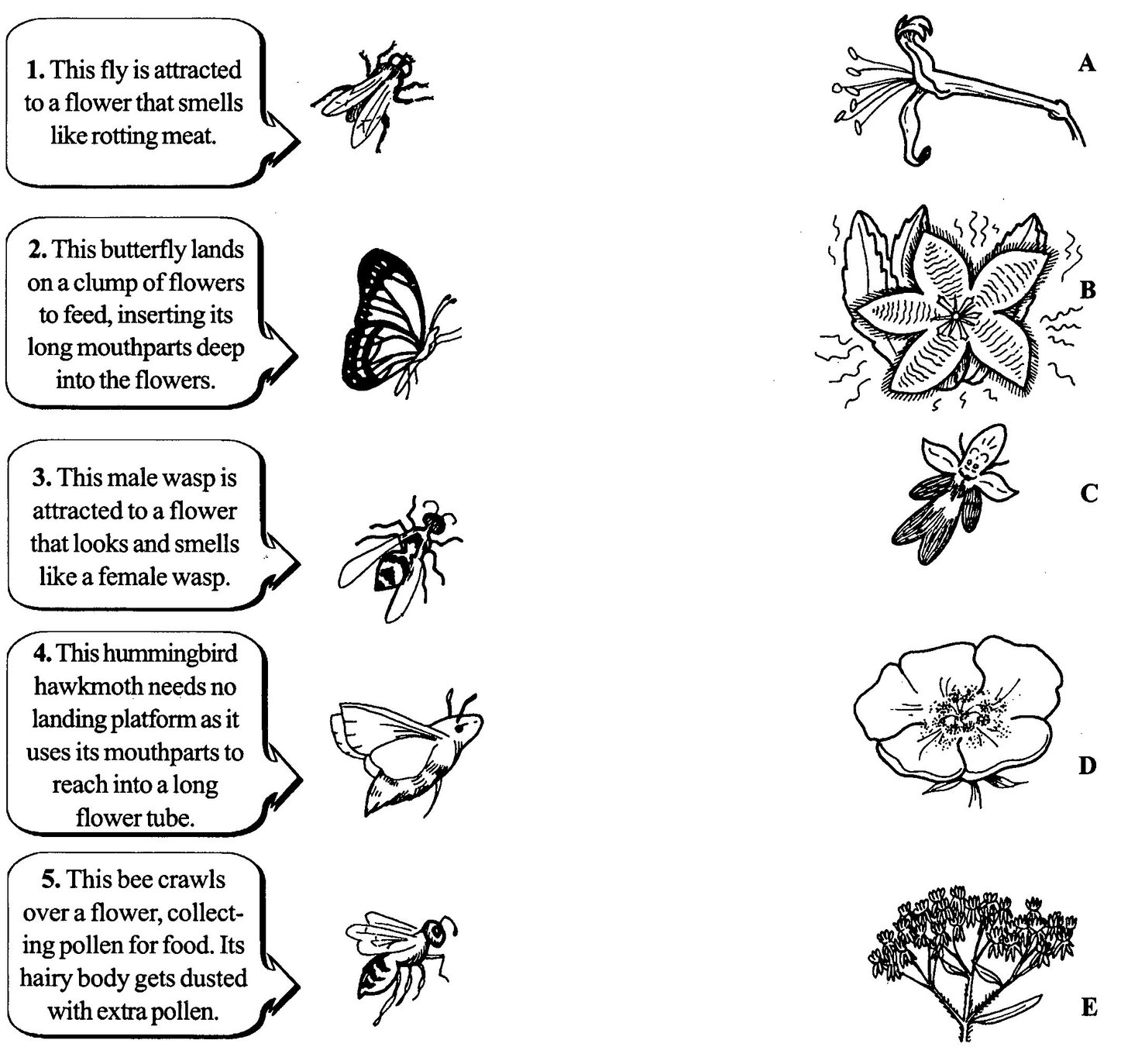Friends of the Flowers
Tiny wingless insects were among the earliest land animals. And long before the Age of Reptiles, insects such as cockroaches, beetles, and dragonflies were common. When flowering plants (angiosperms) appeared toward the end of dinosaur times, the number of different kinds of insects increased dramatically. There were an amazing variety of insects with differing wings, legs, and mouthparts. Of the almost one million species of insects known today, bees, wasps, flies, ants, and butterflies are some of the most specialized.
Angiosperms and insects tend to evolve features that match each other. This type of development is called co-evolution. (The prefix co-means “together.”) In some cases, the plant/insect partnership is so complete that one will die without the other.
First read about the five different kinds of insects. Then match each insect with its plant partner by drawing a line from the insect to the correct plant.

Bonus: Read about the yucca moth and the fig moth to discover examples of complete interdependency.